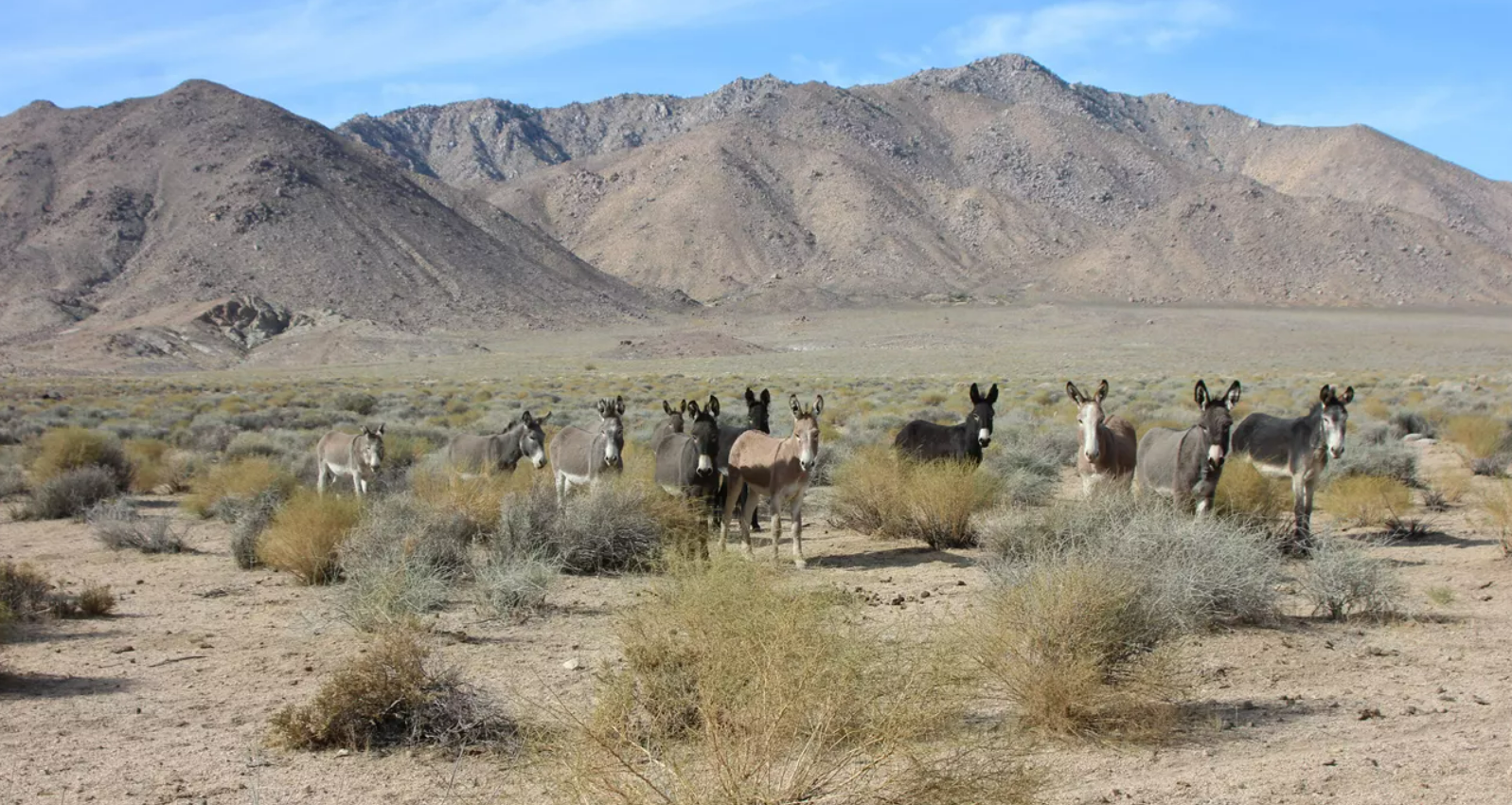At least 11 donkeys have been found dead in Death Valley National Park. While the region has been baked by scorching hot temperatures in its hottest summer on record, extreme heat is not believed to be the culprit (at least not directly).
The National Park Service (NPS) is currently investigating the donkey deaths, but they strongly suspect that a toxic algae bloom at the Owls Hole Spring is to blame.
“I hate to see any animal suffer. The National Park Service is working to remove feral burros from Death Valley, for their own safety and to reduce impacts to native wildlife,” Superintendent Mike Reynolds said in a statement.
The Owls Hole Spring is a stagnant body of water in Death Valley that provides the perfect conditions for algae and cyanobacteria to thrive, especially after a hot summer. In abundance, these microorganisms can release toxins that are harmful to animal health.
The NPS has placed a sign at the Owls Hole Spring, warning ramblers that the water should be considered unsafe for humans or pets to drink or touch. They also caution that people and pets should not touch any of the deceased donkeys.

A group of invasive burros in Butte Valley, northern California.
Image credit: NPS photo/W.Sloan
The donkeys, aka burros, are not native to the national park and are the distant descents of African wild ass (Equua asinus) from North Africa and the Arabian Peninsula. The 4,000 or so individuals in the Death Valley National Park are all descendants of animals released by miners during the Gold Rush.
Although the donkeys come from distant lands, the large herbivores fill an ecological gap formed at the end of the Ice Age when many of North America’s megafauna were driven into extinction.
As an invasive species, the feral burros can pose problems for the local ecosystem. They eat A LOT of vegetation, which is sparse in the desert environment, and limit the amount of food available to native animals, such as Bighorn Sheep, desert tortoises, and seed-eating birds. They can also be very territorial and aggressive, preventing other animals from accessing scarce water sources.
While there have been efforts to wrangle the invasive burros, large roundups have not been carried out since 2005 due to a lack of funds. The Bureau of Land Management worked with the NPS to remove 43 burros in recent years and the nonprofit Peaceful Valley Donkey Rescue has captured 256 burros from the park since 2018. Nevertheless, the population remains relatively strong.
The donkeys do have natural enemies, though. It was long assumed that the introduced equids had no natural predators, but a 2022 study highlights how burros in the Southwestern US are preyed upon by cougars. The researchers argue that donkeys and big cats have formed a strong ecological relationship that fills the void left by the extinction of large prey and sabertoothed cats at the end of the Ice Age around 13,000 years ago.
“Our results suggest,” the study concludes, “that the conservation community should prioritize the protection of apex predators and the world’s remaining megafauna, regardless of their nativeness.”
Source Link: At Least 11 Donkeys Have Dropped Dead In Death Valley From Toxic Algae Bloom